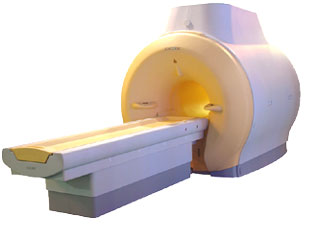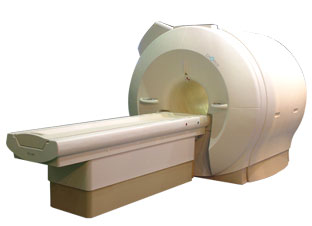 | Info
Sheets |
| | | | | | | | | | | | | | | | | | | | | | | | |
 | Out-
side |
| | | | |
|
| | | | | |  |
Result : Searchterm 'psif' found in 0 term [ ] and 11 definitions [ ] and 11 definitions [ ] ]
| 1 - 5 (of 11) nextResult Pages :  [1 2 3] [1 2 3] |  | |  | Searchterm 'psif' was also found in the following service: | | | | |
|  |  |
| |
|

'MRI system is not an expensive equipment anymore.
ENCORE developed by ISOL Technology is a low cost MRI system with the advantages like of the 1.0T MRI scanner. Developed specially for the overseas market, the ENCORE is gaining popularity in the domestic market by medium sized hospitals.
Due to the optimum RF and Gradient application technology. ENCORE enables to obtain high resolution imaging and 2D/3D Angio images which was only possible in high field MR systems.'
- Less consumption of the helium gas due to the ultra-lightweight magnet specially designed and manufactured for ISOL.
- Cost efficiency MR system due to air cooling type (equivalent to permanent magnetic).
- Patient processing speed of less than 20 minutes.'
Device Information and Specification
CLINICAL APPLICATION
Whole body
CONFIGURATION
Short bore compact
| |  | | | | • Share the entry 'ENCORE 0.5T™':    | | | | | | | | | |
|  | |  |  |  |
| |
|
| |  | |
• View the DATABASE results for 'Reverse Fast Imaging with Steady State Precession' (2).
| | | | |  Further Reading: Further Reading: | News & More:
|
|
| |
|  | |  |  |  |
| |
|

'Next generation MRI system 1.5T CHORUS developed by ISOL Technology is optimized for both clinical diagnostic imaging and for research development.
CHORUS offers the complete range of feature oriented advanced imaging techniques- for both clinical routine and research. The compact short bore magnet, the patient friendly design and the gradient technology make the innovation to new degree of perfection in magnetic resonance.'
Device Information and Specification
CLINICAL APPLICATION
Whole body
Spin Echo, Gradient Echo, Fast Spin Echo,
Inversion Recovery ( STIR, Fluid Attenuated Inversion Recovery), FLASH, FISP, PSIF, Turbo Flash ( MPRAGE ),TOF MR Angiography, Standard echo planar imaging package (SE-EPI, GE-EPI), Optional:
Advanced P.A. Imaging Package (up to 4 ch.), Advanced echo planar imaging package,
Single Shot and Diffusion Weighted EPI, IR/FLAIR EPI
STRENGTH
20 mT/m (Upto 27 mT/m)
| |  | |
• View the DATABASE results for 'CHORUS 1.5T™' (2).
| | | | |
|  |  | Searchterm 'psif' was also found in the following service: | | | | |
|  |  |
| |
|
Coherent gradient echo sequences can measure the free induction decay ( FID), generated just after each excitation pulse or the echo formed prior to the next pulse. Coherent gradient echo sequences are very sensitive to magnetic field inhomogeneity.
An alternative to spoiling is to incorporate residual transverse magnetization directly into the longitudinal steady state.
These GRE sequences use a refocusing gradient in the phase encoding direction during the end module to maximize remaining transverse (xy) magnetization at the time when the next excitation is due, while the other two gradients are, in any case, balanced.
When the next excitation pulse is sent into the system with an opposed phase, it tilts the magnetization in the - a direction. As a result the z-magnetization is again partly tilted into the xy-plane, while the remaining xy-magnetization is tilted partly into the z-direction.
A fully refocused sequence with a properly selected and uniform f would yield higher signal, especially for tissues with long T2 relaxation times (high water content) so it is used in angiographic, myelographic or arthrographic examinations and is used for T2* weighting.
The repetition time for this sequence has to be short. With short TR, coherent GE is also useable for breath hold and 3D technique. If the repetition time is about 200 msec there's no difference between spoiled or unspoiled GE. T1 weighting is better with spoiled techniques.
The common types include GRASS, FISP, FAST, and FFE.
The T2* component decreases with long TR and short TE. The T1 time is controlled by flip angle. The common TR is less than 50 ms and the common TE less than 15 ms
Other types have stronger T2 dependence but lower SNR. They include SSFP, CE-FAST, PSIF, and CE-FFE-T2.
Examples of fully refocused FID sequences are TrueFISP, bFFE and bTFE. | |  | |
• View the DATABASE results for 'Coherent Gradient Echo' (6).
| | | | |
|  | |  |  |  |
| |
|
Contrast enhanced GRE sequences provide T2 contrast but have a relatively poor SNR. Repetitive RF pulses with small flip angles together with appropriate gradient profiles lead to the superposition of two resonance signals.
The first signal is due to the free induction decay FID observed after the first and all ensuing RF excitations.
The second is a resonance signal obtained as a result of a spin echo generated by the second and all addicted RF-pulses.
Hence it is absent after the first excitation, it is a result of the free induction decay of the second to last RF-excitation and has a TE, which is almost 2TR.
For this echo to occur the gradients have to be completely symmetrical relative to the half time between two RF-pulses, a condition that makes it difficult to integrate this pulse sequence into a multiple slice imaging technique.
The second signal not only contains echo contributions from free induction decay, but obviously weakened by T2-decay.
Since the echo is generated by a RF-pulse, it is truly T2 rather than T2* weighted. Correspondingly it is also less sensitive to susceptibility changes and field inhomogeneities.
Companies use different acronyms to describe certain techniques.
Different terms (see also acronyms) for these gradient echo pulse sequences:
CE-FAST Contrast Enhanced Fourier Acquired Steady State,
CE-FFE Contrast Enhanced Fast Field Echo,
CE-GRE Contrast Enhanced Gradient-Echo,
DE-FGR Driven Equilibrium FGR,
FADE FASE Acquisition Double Echo,
PSIF Reverse Fast Imaging with Steady State Precession,
SSFP Steady State Free Precession,
T2 FFE Contrast Enhanced Fast Field Echo (T2 weighted).
In this context, 'contrast enhanced' refers to the pulse sequence, it does not mean enhancement with a contrast agent. | |  | |
• View the DATABASE results for 'Contrast Enhanced Gradient Echo Sequence' (4).
| | | | |
|  | |  |  |
|  | |
|  | 1 - 5 (of 11) nextResult Pages :  [1 2 3] [1 2 3] |
| |
|
| |
 | Look
Ups |
| |